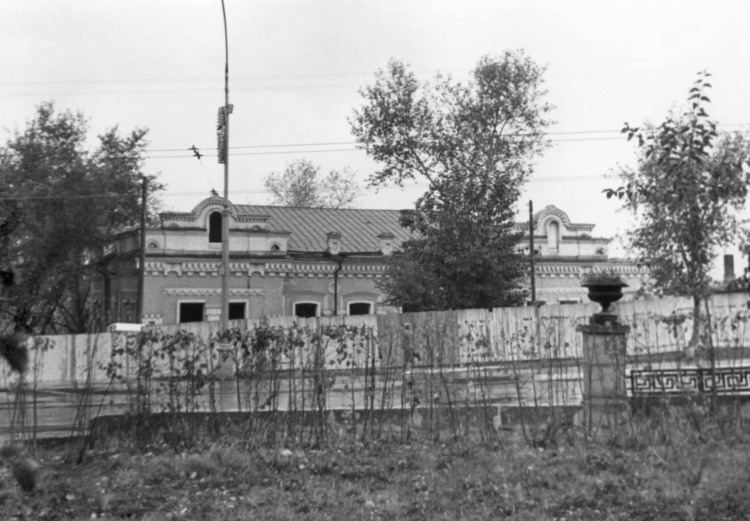 | ||
Similar Church of All Saints - Yekaterinburg, Alexander Palace, Ipatievsky Monastery, Ganina Yama, Romanov Tercentenary | ||
Ipatiev house view
Ipatiev House (Russian: Дом Ипатьева) was a merchant's house in Yekaterinburg where the former Emperor Nicholas II of Russia, his family and members of his household were executed following the Bolshevik Revolution. Its name is identical with that of the Ipatiev Monastery in Kostroma, from where the Romanovs came to the throne. It was demolished in 1977.
Contents
- Ipatiev house view
- The exterior view of the ipatiev house where the romanovs were executed in yekate hd stock footage
- History
- Imperial family
- Demolition
- In literature and drama
- References

The exterior view of the ipatiev house where the romanovs were executed in yekate hd stock footage
History
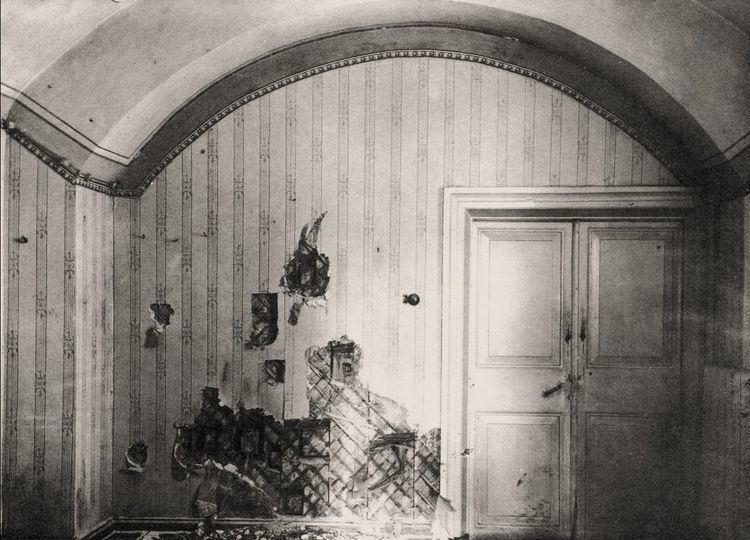
In the 1880s, Ivan Redikortsev, an official involved in the mining industry, commissioned a two-story house to be built on the slope of a prominent hill. The length of the facade was 31 metres. In 1898, the mansion passed to Sharaviev, a gold dealer of tainted reputation. Ten years later, the house was acquired by Nikolai Nikolayevich Ipatiev, a military engineer, who turned the ground floor into his office. It seems to have been on the basis of information supplied by Pyotr Voikov that Ipatiev was summoned to the office of the Ural Soviet at the end of April 1918 and ordered to vacate what was soon to be called "The House of Special Purpose."
Imperial family
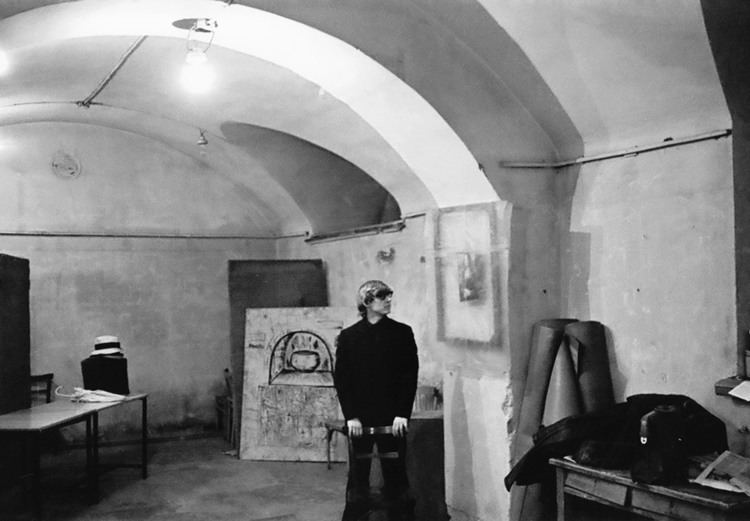
The Romanov family moved in on 30 April 1918 and spent 78 days at the house. Nicholas Romanov, his wife, their four daughters, their son, their court physician/Dr. Yevgeny Botkin, chambermaid Anna Demidova, cook Ivan Kharitonov, and valet Alexei Trupp, occupied four rooms on the upper story of the Ipatiev House while their guards were housed on the ground floor. From early July command of the guard was taken over by Yakov Yurovsky, a senior member of the Ural Soviet. The prisoners were permitted brief daily exercise in an enclosed garden but the windows to their rooms were painted over and they were kept in isolation from the outside. A high wooden fence was built around the outer perimeter of the house, closing it off from the street.
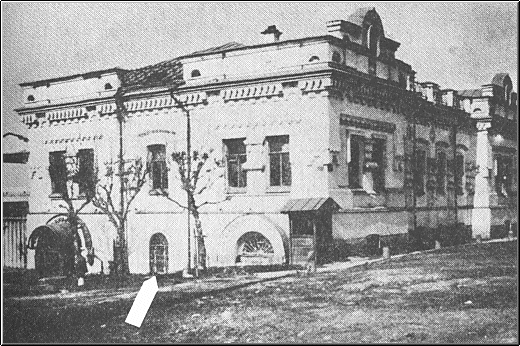
About midnight on 16–17 July 1918 Commander Yurovsky entered the second floor room of Dr Botkin who was awake and writing a letter. Botkin was told to awaken the Imperial family and their three remaining attendants so that the whole party could be evacuated from Yekaterinburg. The reason given was that the White forces were nearing the city and that there had been firing in the streets. After taking about half an hour to dress and pack, the Romanovs, Botkin and the three servants were led down a flight of stairs, into the courtyard of the house and then through a ground-floor entrance to a small semi-basement room at the rear of the building. Chairs were brought for Nicholas and Alexandra at the latter's request. The remainder of the party stood behind and to one side of the seated couple, except for the frail Alexei who sat on the Tsar's lap.

After a delay Yurovsky and a party of armed men entered the basement room through the double doors. Ivan Plotnikov, history professor at the Maksim Gorky Ural State University, has established that the executioners were: Yakov Yurovsky, G. P. Nikulin, M. A. Medvedev (Kudrin), Peter Ermakov, S. P. Vaganov, A. G. Kabanov, P. S. Medvedev, V. N. Netrebin, and Y. M. Tselms. Filipp Goloshchekin, a close associate of Yakov Sverdlov whom he had met in early July 1918 in Moscow, brought back the final orders to carry out the executions. Being a military commissar of the Uralispolkom in Yekaterinburg, Goloshchekin however did not actually participate in the actual killings. Three Latvians refused at the last minute to take part in the execution.
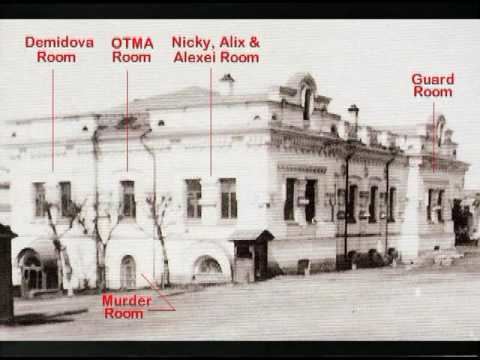
Yurovsky spoke briefly to the effect that Romanov relatives had attempted to save the Imperial family, that this attempt had failed and that the Soviets were now obliged to shoot them all. He and his squad then opened fire with pistols on the prisoners. The number of people crowded into a comparatively small area led to an inefficient and messy slaughter. The women among the prisoners had diamonds and jewelry concealed in their clothing, deflecting many of the bullets. It took between twenty and thirty minutes before all were killed.
Demolition
As early as 1923, the photographs of the fenced house were disseminated in the Soviet press under the label of "the last palace of the last Tsar". In 1927, the house was designated a branch of the Ural Revolution Museum. It then became an Agricultural School before taking on new life in 1938 as an Anti-Religious Museum. During this period it was customary for party apparatchiks to arrive in large tour groups, posing before the bullet-damaged wall of the cellar in which the former Tsar and his family had been murdered. In 1946 it was taken over by the local Communist Party. In 1974 it was formally listed as a Historical-Revolutionary Monument. But, to the embarrassment of the government, it was steadily becoming a place of pilgrimage for those who wished to honour the memory of the imperial family.
In 1977, as the sixtieth anniversary of the Russian Revolution approached, the Politburo decided to take action, declaring that the house was not of 'sufficient historical significance', and ordering its demolition. The task was passed to Boris Yeltsin, chair of the local party, who had the house demolished in September 1977. He later wrote in his memoirs, published in 1990, that "sooner or later we will be ashamed of this piece of barbarism." But, despite this action, the pilgrims kept coming, often in secret and at night, leaving tokens of remembrance on the vacant site. After the Dissolution of the Soviet Union that was complete by 1991, the Church on the Blood was built on the site and is now a major place of pilgrimage.
In literature and drama
It features as the setting for the play, Ekaterinburg, which deals with the time in captivity, spent inside the Ipatiev House, by the Romanovs and the retainers.
